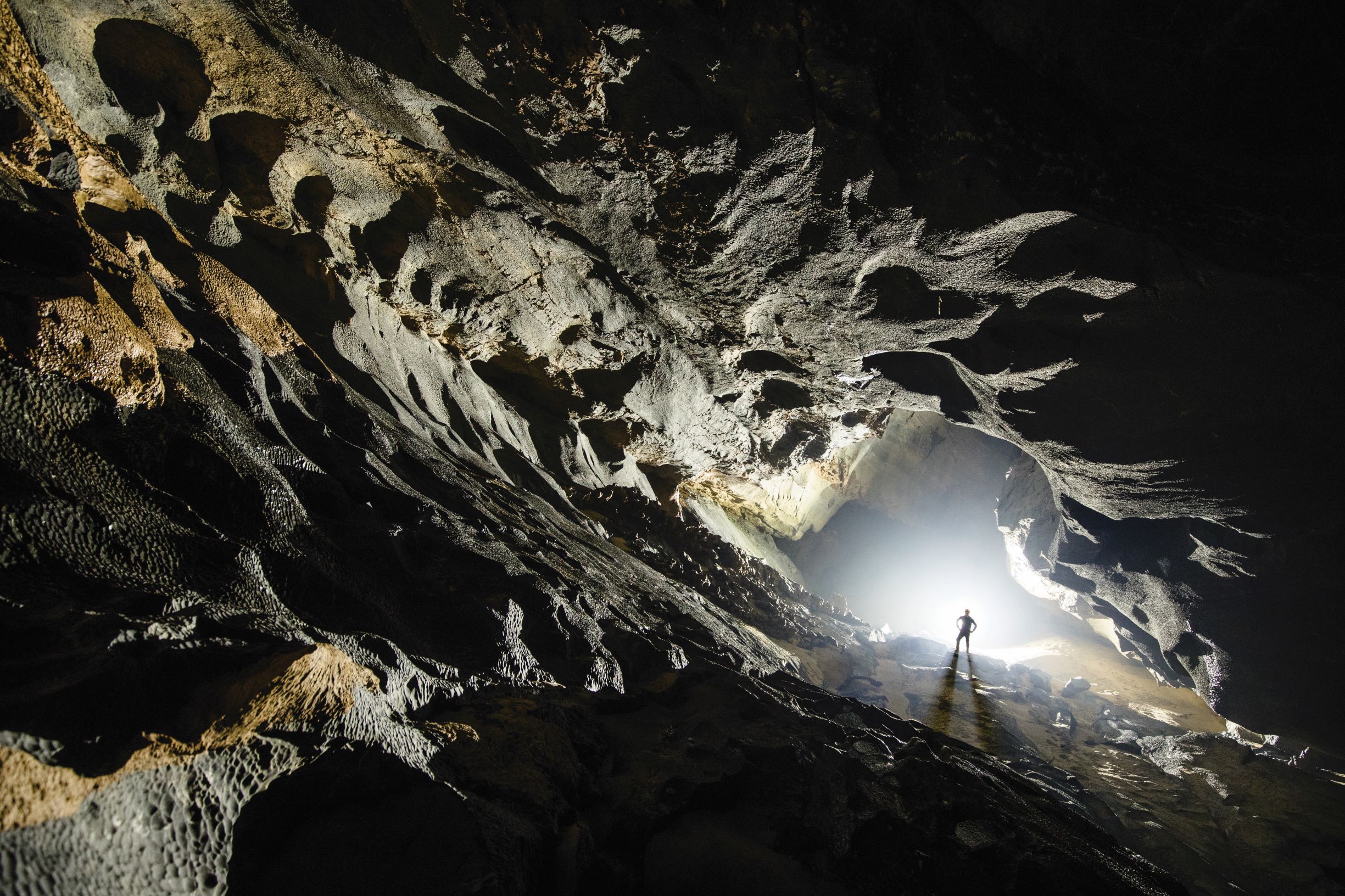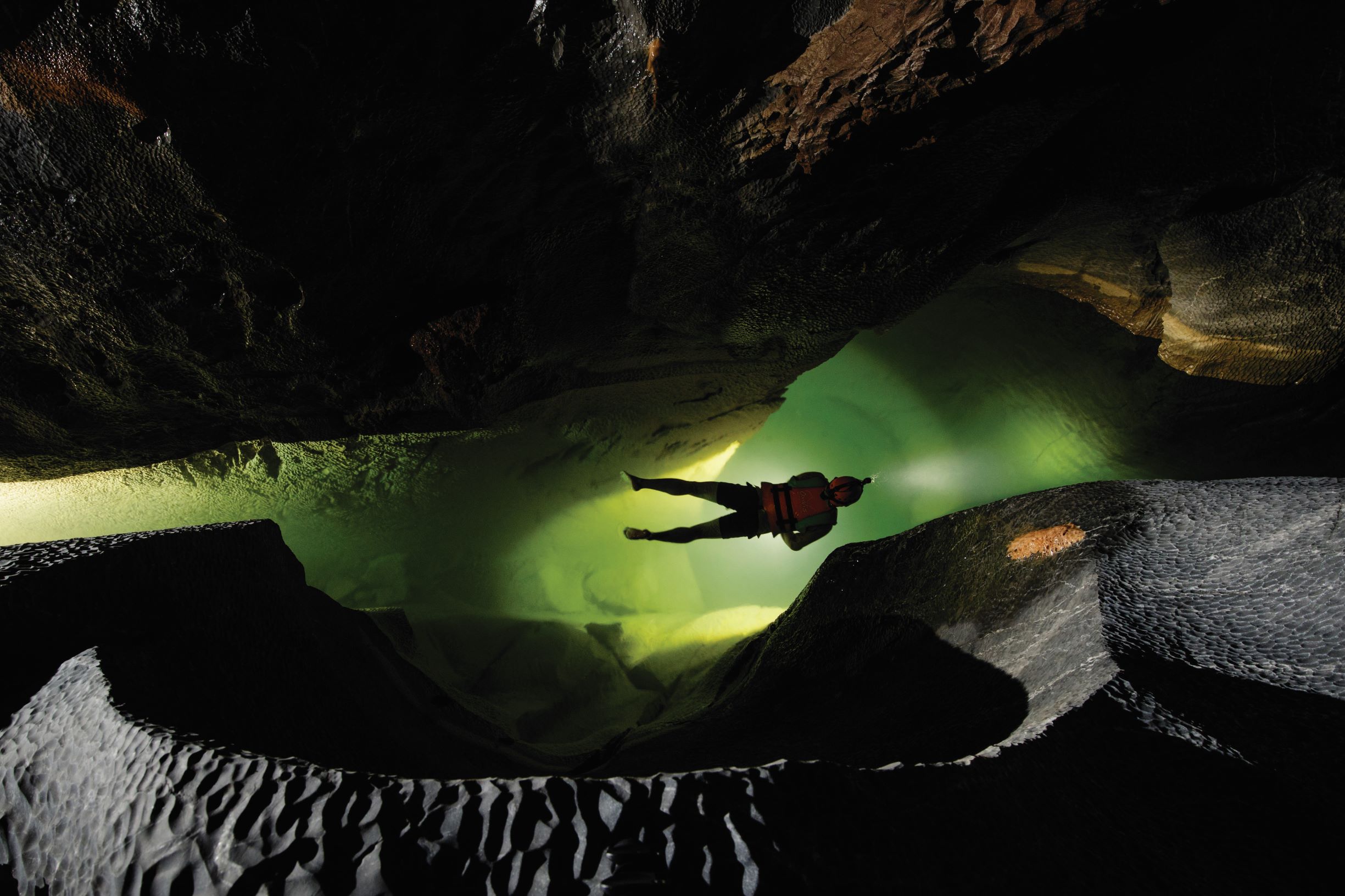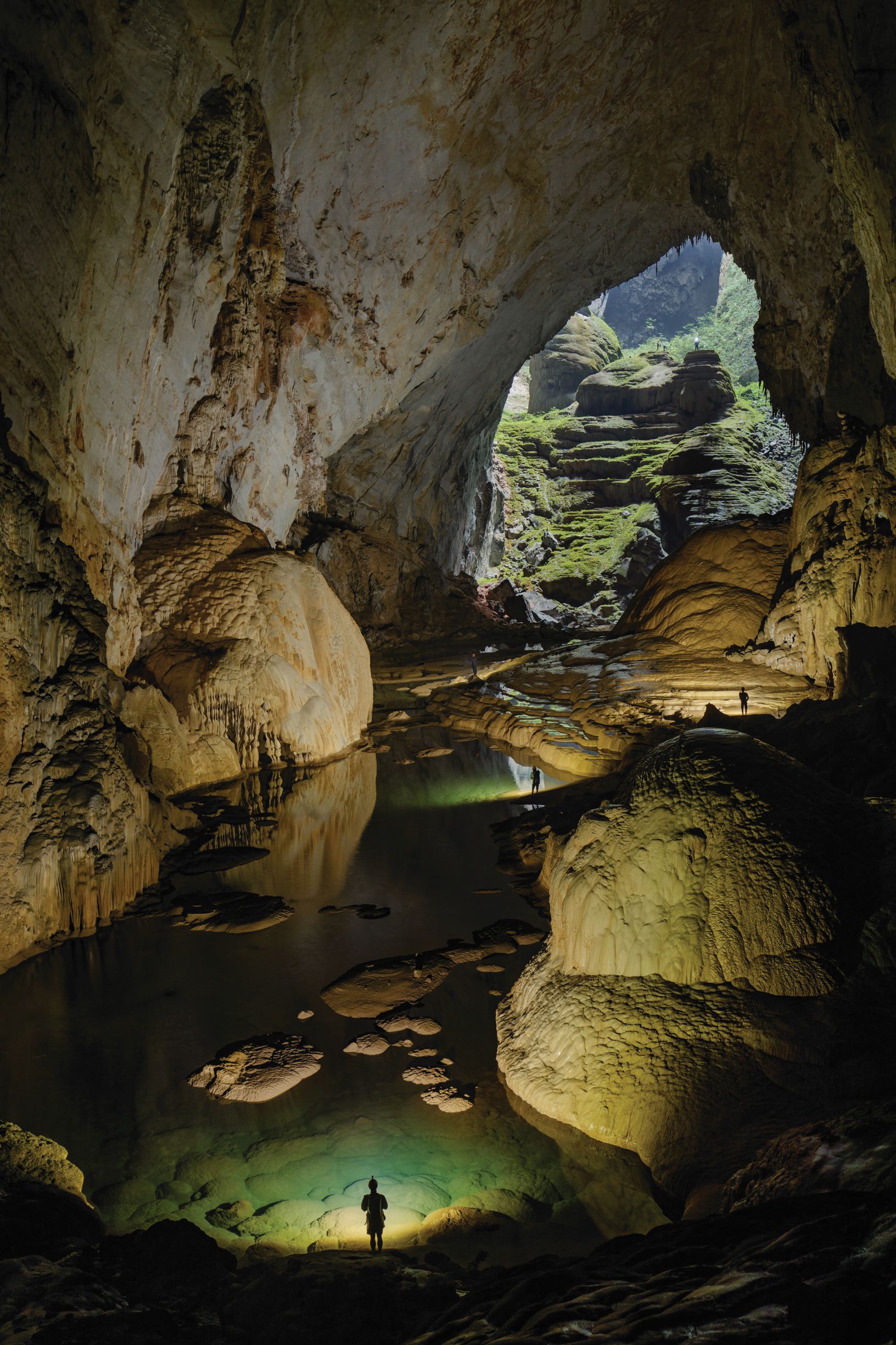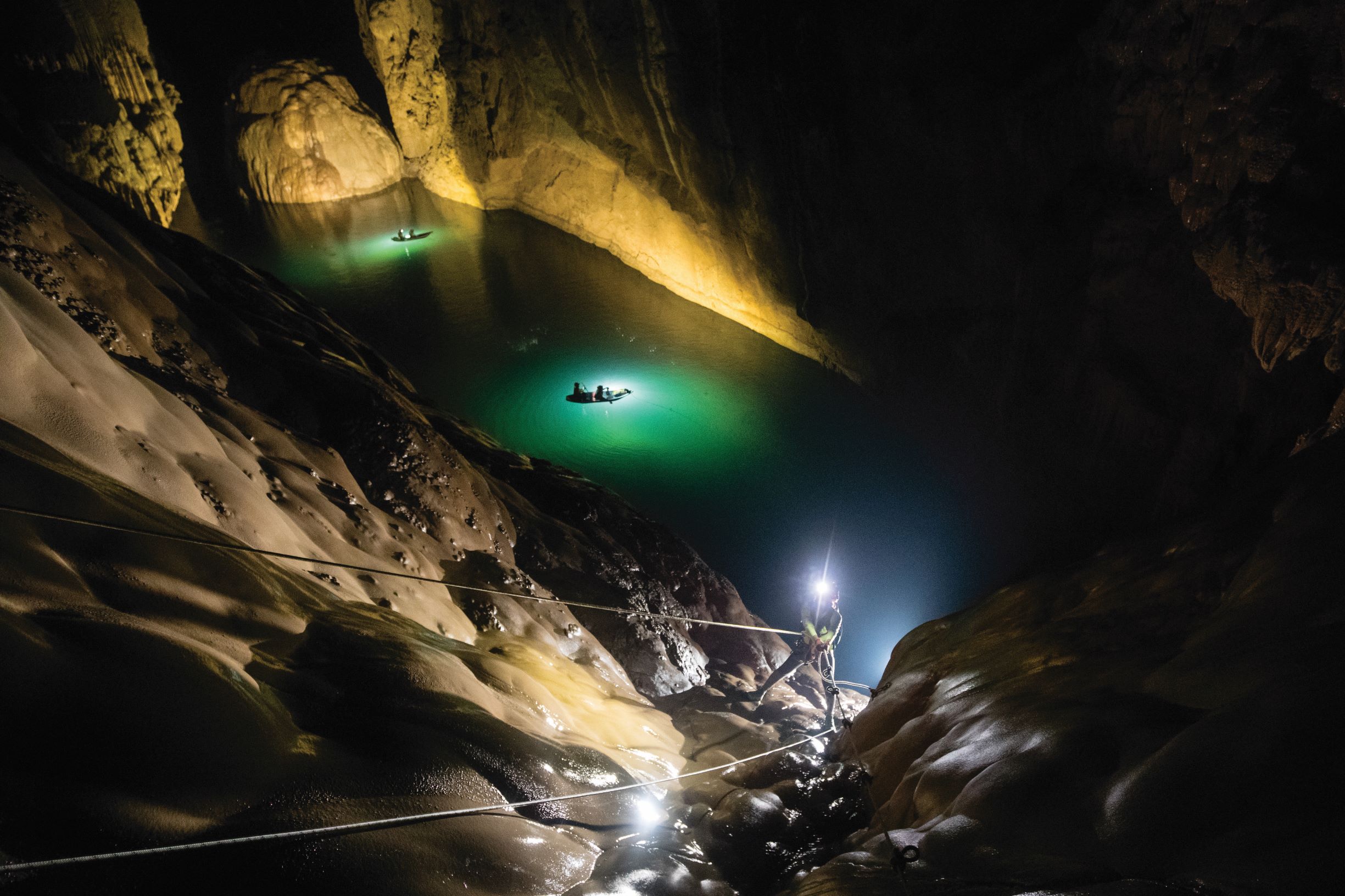Inside Vietnam’s Hang Son Doong, the World’s Largest Cave
Venture underground into this astonishing geological wonder.

One of the most significant geological finds in recent exploration—the discovery of Vietnam’s Hang Son Doong, the world’s largest cave—almost never happened.
Circa 1990 farmer Ho Khanh stumbled across an entrance and a limestone overhang in the thick jungle of Phong Nha-Ke Bang National Park. The distant noise of rushing water caught his attention, but he thought no more of it. Given the thick, almost impassable, Vietnamese jungle, the farmer’s trail was lost in any case, and he did not try to find his way back.
For about 18 years, Son Doong’s existence was seemingly destined to remain a secret, but eventually, he would mention his find to a curious couple from the British Cave Research Association (BRCA).

Ho Khanh wasn’t alone in his close encounters with the monster cave. Howard and Deb Limbert, members of the BRCA, have been exploring the area for decades, and in 1994 the pair encountered two caves.
First they explored Hang Thung, a cave downstream from Son Doong, where an underground river emerged. Then within a couple of weeks, they ventured into Hang En, a large cave upstream from Son Doong, whose river disappears into boulders. It was clear that a gap of some five kilo-meters between these spots could be a cave carved by the same water flow.
Son Doong turned out to be immense. Reportedly large enough to hold a city block of skyscrapers, it seems otherworldly. Making the space even more impressive are the two roof collapses that have allowed sunlight into the cavern, permitting the growth of organisms such as algae, plants and even trees—a miniature jungle, a microcosm of the inhospitable terrain above ground, even with its own microclimate.

Despite the scale of the cavern, it remained well hidden until the same farmer, Ho Khanh, rediscovered the entrance in the limestone leading into the cave. This time the opportunity didn’t slip by, and in 2009, Howard and Deb Limbert began to explore what would soon become the find of a lifetime.
The remoteness and location of Son Doong added to the difficulty of locating the cave, and to the risk of executing scientific explorations.
According to Howard Limbert, “The cave is quite deep inside the jungle, so the location itself is a risk. Although it’s such a huge cave, the terrain is not easy, so initially it is quite difficult to find the best way to progress. For experienced cavers, the risks are not so great, but we always respect the fact that we are a long way from home and help. It is a challenge to measure and map such a huge cave passage.”
Soon after, the Limberts’ team mapped the cave, and researchers realized that Son Doong wasn’t just big, it was the largest cave ever discovered. While exhilarating to the cave exploration community, this headline-grabbing revelation created a problem seen at nature’s grandest sites, from Yosemite National Park to Mt. Everest: tourism and the balance between access and preservation.

While some have tried to expand access to allow thousands of tourists to visit, a large number of Vietnamese people managed to convince the authorities to resist such plans. For now, the only way to enjoy the splendor of Son Doong is through Oxalis, an adventure travel company that employs the Limberts as well as Ho Khanh and other locals.
On the exclusive tour with Oxalis, guests will spend four days and three nights camping in the cave system (two nights in Son Doong, and one in nearby Hang En cave, reckoned to be the world’s third-largest). While Limbert insists visitors be in reasonable physical condition and have some experience trekking on rough and rocky terrain, this isn’t a place reserved solely for death-defying adrenaline junkies.
A fear of heights isn’t ideal either, but most of the dangerous and difficult spots are protected with ropes, and guests wear caving harnesses for additional safety. In fact, for each group of 10 visitors, there are seven safety staff, showing how seriously the company takes the well-being of its clients. In all, 27 staff members, including guides, chefs and porters, ensure you can safely explore the cave system, without sacrificing good cuisine or relatively comfortable camping accommodations.
https://www.instagram.com/p/BtpSpRxgxFv
Visitors get to climb the Great Wall of Vietnam, a roughly 90-meter calcite barrier, and visit the ethnic minority village of Ban Doong, in addition to the 25 km of jungle trekking, which includes 9 km of caving. The crew even bring portable lighting equipment to illuminate the cave’s myriad visual features, allowing for jaw-dropping nature photography.
As Son Doong cave’s fame becomes more widespread, and the places on Earth considered to be on the frontier of discovery and exploration seemingly diminish, there appears to be an inevitable growth in demand for visits to the site, placing it and the heart of the UNESCO-listed Phong NhaKe Bang National Park under the threat of rampant tourism and overuse.
But with Oxalis and the local park and government authorities committed to the site for the long term, both for natural as well as economic reasons, there’s a chance to maintain the equilibrium of the newfound wonder.
https://www.instagram.com/p/BqVhHiZlelr
Oxalis tries to ensure this as, according to Limbert, “We have a single path throughout the cave, and we make sure everyone sticks to that. All rubbish is brought out of the cave, including human waste. Cooking is by gas bottle. Everyone is reminded that this is a UNESCO World Heritage site. And all staff now realize the value of the cave in providing jobs, so they are keen to protect it, and keep the tours going for the future.”
